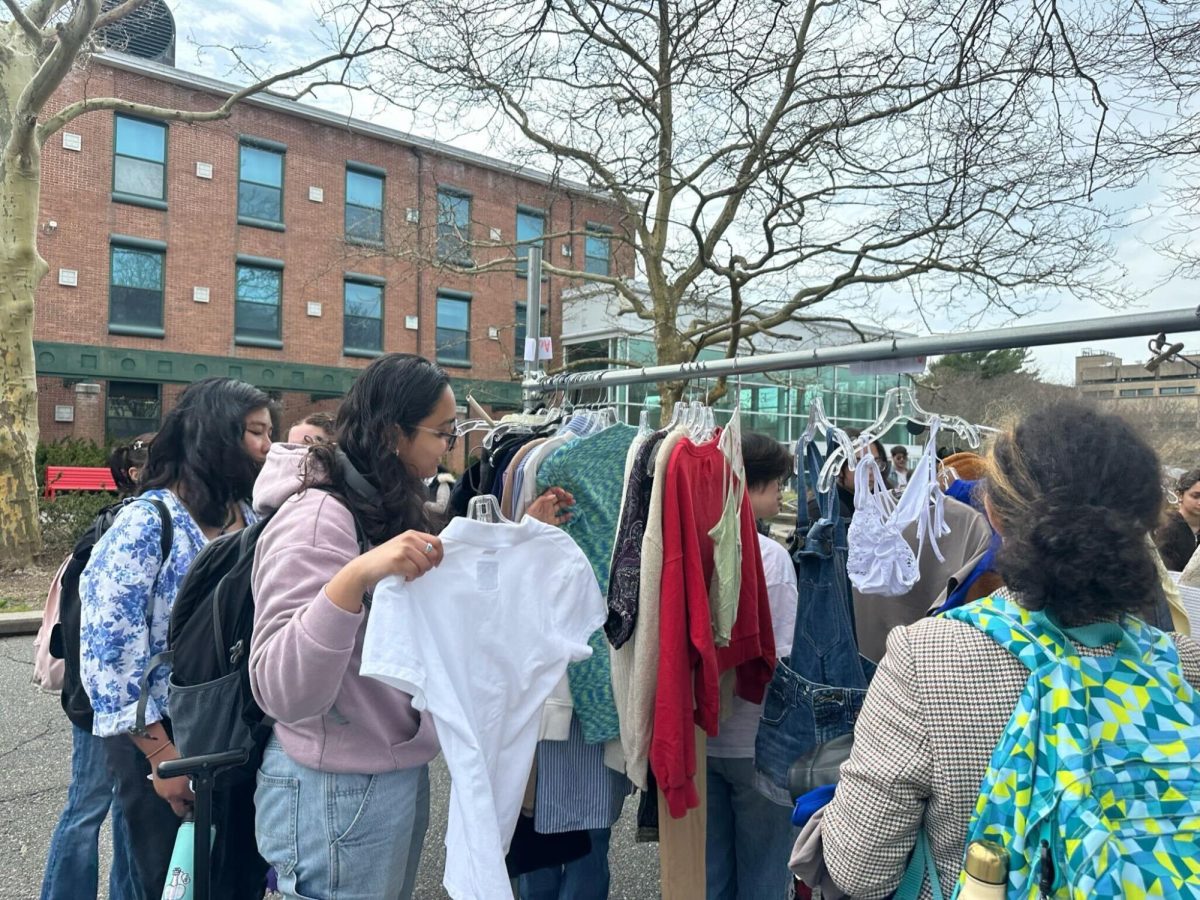
In the fall of 2015, when Stony Brook University became the first school in the country to install a Freight Farm — a hydroponic, or soil-free, sustainable method of agriculture — Kylie Campanelli jumped at the opportunity.
“When the applications came out, one of the professors asked specifically that the university send it to me,” Campanelli, a senior sustainability studies major, said. “It was a competitive process… I actually got the job on the spot. It’s pretty cool.”
Now a year later, Campanelli spends 10 to 15 hours a week at the farm, a green shipping container nestled in the back of Roth Café. She leads a crew of four workers, including two interns who started this month.
“We do everything from the seeding, the planting, to the harvesting,” she said. “We have to do guest planning and scheduled tours — like three a month. We give demonstrations on how to care for the plants and what goes into hydroponics.”
Bibb lettuce, known for its sweet flavor and tender texture, is the variety of green that the farm currently grows, but it has grown other varieties of greens and herbs in the past like bok choy and swiss chard, Campanelli said. In theory, any type of plant could be grown using hydroponic technology.
The lettuce is harvested about once a week, producing 200 to 800 heads per harvest, and it all goes into Stony Brook’s dining halls. As of now, that only makes up a small portion of the lettuce on campus due to limitations in farm space — about an acre’s worth — and financial support. However, the amount that is grown is economical to the school.
“The lettuce that we produce costs the university about 12 cents per head,” Campanelli said. “That’s compared to the typical dollar-fifty.”
From germination to the dinner plates of dining halls, the plants never touch an ounce of dirt. The roots are anchored in place on shelves lining the walls of the 8 by 40-foot unit. Through circuits of tubing, a nutrient-rich water solution gets absorbed in the roots, infiltrating the lettuce by osmosis.
The technology is not only efficient in producing year-round growth and growth without soil, but it also uses 90 percent less water than normal agriculture.
The system is self-maintaining, allowing temperature, humidity and lighting to be “perfectly monitored,” Campanelli said, spare minor fluctuations, for which one of the workers makes appropriate calibrations.
In the spring, Campanelli hopes the farm will be modified to grow strawberries for the school’s annual Strawberry Fest held in May.
“We’re usually limited to foods that have the same temperature and climate, so this would be our first big change and we’re excited about that,” she said. “The school hauls in thousands of strawberries, from other states, imported, whatever, and if we could grow them right on campus, that would be really cool.”
Despite the time commitment, the humid and dark indoor conditions and the occasional disagreement with the university over allocation of funds, Campanelli said that her time working on the farm is rewarding and worth the energy.
“It’s a really cool operation and we’re really proud to be a part of it,” Campanelli said. “For me personally, this is the type of work I want to be a part of in my career, so to get it started here is awesome.”


















Jo Ann G. • Jan 18, 2017 at 9:00 am
I find it pretty cool that my alma mater is the first school to install a Freight Farm. Yea!